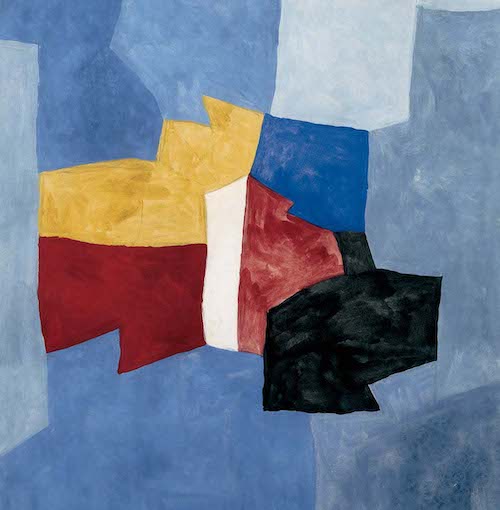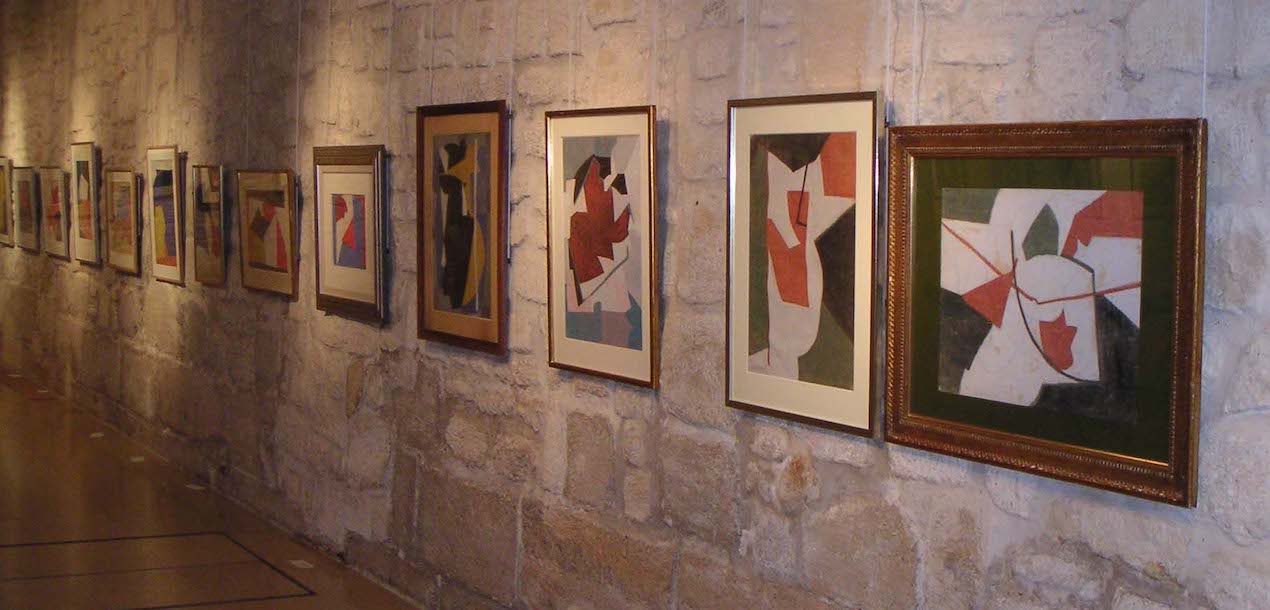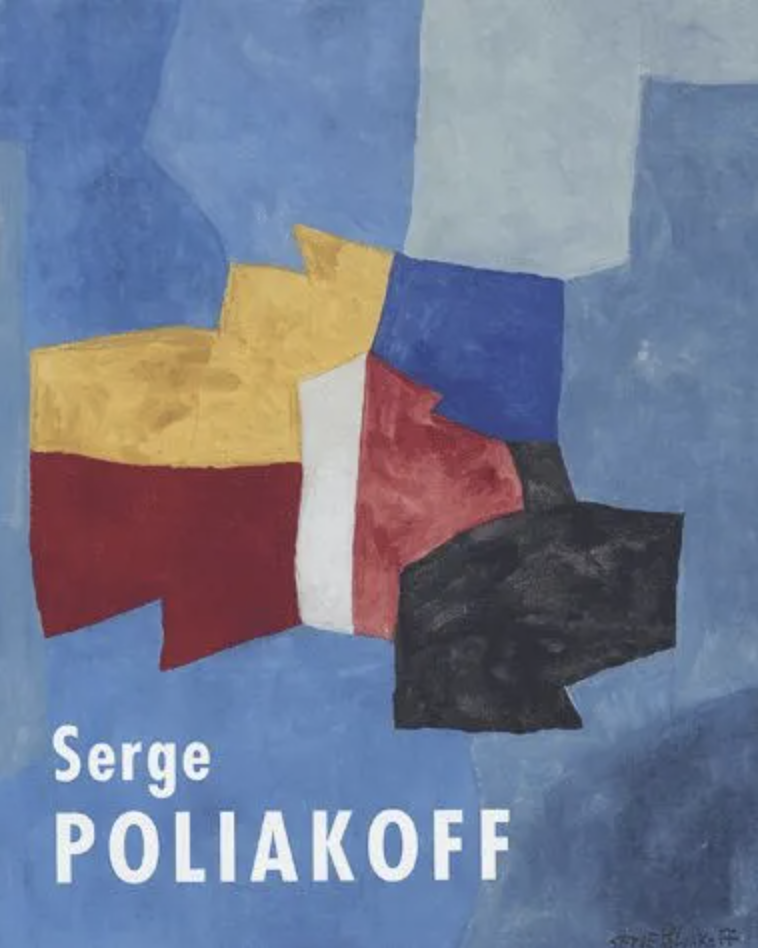En cours
A Venir
Billetterie
Collections en ligne
Actualités
Boutique
Restaurants et privatisation


The Musée Maillol presents the first retrospective exhibition of Serge Poliakoff’s works on paper. With almost 150 works from the Alexis Poliakoff collection and the collection of the Musée Maillol, supplemented by numerous loans from private and public collections, this exhibition traces the career of one of the most important figures in abstraction.
Three periods, 1930-1944, 1944-1960 and 1960-1969, retrace the career of this great troubadour of life, born in Moscow at the turn of the century, on 8 January 1900, into a wealthy family of fourteen children.
Poliakoff’s path began with Russian folklore and a figurative approach to his culture. Unlike Kandinsky and the first abstract painters, Poliakoff did not have an expressionist period; he crossed the threshold between abstraction and figuration through schematisation, particularly of Russian dances. While studying the sarcophagi in the British Museum, he discovered that the Egyptians worked in layers and superimposed them. This discovery would be fundamental to his work. He no longer worked by mixing but by superimposing. It is the underlying hues that create the substance and depth of the tones. In 1944, his painting moved away from figuration and became completely abstract. His gouaches followed the evolution of his inspiration. With his contrasting colors and rigorous composition, he opened up a new path within the abstract movement, which saw an extraordinary flourishing of artists and styles in France from the 1950s onwards.
This was the start of the gouache season. Every summer, Serge Poliakoff took his small workshop with him: pigments, which he prepared himself, and his paper. The gouaches became an entity, a type of research that was later reused in his painting. He continued to work with superimpositions, never mixing tones to obtain “the life of colors”. This work gives his oeuvre an incomparable sensation of texture and depth within each color. Poliakoff never forgot Cézanne’s lesson: to give a feeling of space through color, without ever using perspective. Nor that of the British Museum. By combining the effects of colors in relation to each other, he invented a substantive color. Then, by abandoning the line that separated the colors, he gave this color the dimension of a form. Over time, he also transformed the composition of his paintings. The 1950s were marked by the use of monochrome, and later he introduced black, around which he built his entire composition.
From the 1960s onwards, the École de Paris shone with its last lights. Poliakoff was one of its last exponents, before the influence of New York geometric abstraction took hold. Gouache remained his medium for experimentation, which then carried over into painting. From year to year, his compositions became more complex. He created diptychs, then polyptychs. He dreamt of walls transformed into stained glass windows. At the end of his life, he introduced increasingly massive geometric figures that invaded the field of gouache.
The Musée Maillol presents the first retrospective exhibition of Serge Poliakoff’s works on paper. With almost 150 works from the Alexis Poliakoff collection and the collection of the Musée Maillol, supplemented by numerous loans from private and public collections, this exhibition traces the career of one of the most important figures in abstraction.
Three periods, 1930-1944, 1944-1960 and 1960-1969, retrace the career of this great troubadour of life, born in Moscow at the turn of the century, on 8 January 1900, into a wealthy family of fourteen children.
Poliakoff’s path began with Russian folklore and a figurative approach to his culture. Unlike Kandinsky and the first abstract painters, Poliakoff did not have an expressionist period; he crossed the threshold between abstraction and figuration through schematisation, particularly of Russian dances. While studying the sarcophagi in the British Museum, he discovered that the Egyptians worked in layers and superimposed them. This discovery would be fundamental to his work. He no longer worked by mixing but by superimposing. It is the underlying hues that create the substance and depth of the tones. In 1944, his painting moved away from figuration and became completely abstract. His gouaches followed the evolution of his inspiration. With his contrasting colors and rigorous composition, he opened up a new path within the abstract movement, which saw an extraordinary flourishing of artists and styles in France from the 1950s onwards.
This was the start of the gouache season. Every summer, Serge Poliakoff took his small workshop with him: pigments, which he prepared himself, and his paper. The gouaches became an entity, a type of research that was later reused in his painting. He continued to work with superimpositions, never mixing tones to obtain “the life of colors”. This work gives his oeuvre an incomparable sensation of texture and depth within each color. Poliakoff never forgot Cézanne’s lesson: to give a feeling of space through color, without ever using perspective. Nor that of the British Museum. By combining the effects of colors in relation to each other, he invented a substantive color. Then, by abandoning the line that separated the colors, he gave this color the dimension of a form. Over time, he also transformed the composition of his paintings. The 1950s were marked by the use of monochrome, and later he introduced black, around which he built his entire composition.
From the 1960s onwards, the École de Paris shone with its last lights. Poliakoff was one of its last exponents, before the influence of New York geometric abstraction took hold. Gouache remained his medium for experimentation, which then carried over into painting. From year to year, his compositions became more complex. He created diptychs, then polyptychs. He dreamt of walls transformed into stained glass windows. At the end of his life, he introduced increasingly massive geometric figures that invaded the field of gouache.

Serge Poliakoff,
la saison des gouaches
The Musée Maillol presents the first retrospective exhibition of Serge Poliakoff’s works on paper. With almost 150 works from the Alexis Poliakoff collection and the collection of the Musée Maillol, supplemented by numerous loans from private and public collections, this exhibition traces the career of one of the most important figures in abstraction.
Three periods, 1930-1944, 1944-1960 and 1960-1969, retrace the career of this great troubadour of life, born in Moscow at the turn of the century, on 8 January 1900, into a wealthy family of fourteen children.
Poliakoff’s path began with Russian folklore and a figurative approach to his culture. Unlike Kandinsky and the first abstract painters, Poliakoff did not have an expressionist period; he crossed the threshold between abstraction and figuration through schematisation, particularly of Russian dances. While studying the sarcophagi in the British Museum, he discovered that the Egyptians worked in layers and superimposed them. This discovery would be fundamental to his work. He no longer worked by mixing but by superimposing. It is the underlying hues that create the substance and depth of the tones. In 1944, his painting moved away from figuration and became completely abstract. His gouaches followed the evolution of his inspiration. With his contrasting colors and rigorous composition, he opened up a new path within the abstract movement, which saw an extraordinary flourishing of artists and styles in France from the 1950s onwards.
This was the start of the gouache season. Every summer, Serge Poliakoff took his small workshop with him: pigments, which he prepared himself, and his paper. The gouaches became an entity, a type of research that was later reused in his painting. He continued to work with superimpositions, never mixing tones to obtain “the life of colors”. This work gives his oeuvre an incomparable sensation of texture and depth within each color. Poliakoff never forgot Cézanne’s lesson: to give a feeling of space through color, without ever using perspective. Nor that of the British Museum. By combining the effects of colors in relation to each other, he invented a substantive color. Then, by abandoning the line that separated the colors, he gave this color the dimension of a form. Over time, he also transformed the composition of his paintings. The 1950s were marked by the use of monochrome, and later he introduced black, around which he built his entire composition.
From the 1960s onwards, the École de Paris shone with its last lights. Poliakoff was one of its last exponents, before the influence of New York geometric abstraction took hold. Gouache remained his medium for experimentation, which then carried over into painting. From year to year, his compositions became more complex. He created diptychs, then polyptychs. He dreamt of walls transformed into stained glass windows. At the end of his life, he introduced increasingly massive geometric figures that invaded the field of gouache.
Mentions légales | CGU | Données personnelles | Gestion des cookies
Musée Maillol, 2021
Mentions légales | CGU | Données personnelles | Gestion des cookies
Musée Maillol, 2021